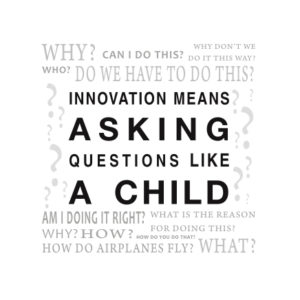 One of the human factors in innovation that can hold us back is a desire to find quick solutions.
One of the human factors in innovation that can hold us back is a desire to find quick solutions.
When confronted with a problem, have you ever found yourself wanting to roll up your sleeves and engage by leaping quickly (sometimes blindly) into the midst of the fray? Starting from the here and now, we quickly think of potential solutions that have had some mark of success for us in the past. If we still cannot resolve the problem, we return to the drawing board and systematically check every point in the diagram to identify the problem. Yet what if what we perceive as the problem is actually a secondary or tertiary symptom of the real problem? At times, we look for complicated solutions to match our complicated ideas. We ignore the larger picture and focus on the minutia.
In general, we believe our knowledge is advancing and our application of that knowledge is progressing. Yet only future generations will be able to distinguish between our successes and failures. When people began using Freon as a coolant decades ago, there was no doubt that they fervently believed Freon was an amazing success! However, those beliefs were cut to the core when we learned that, in the process of cooling our homes and businesses, Freon was heating up the entire planet by depleting the ozone layer.
Another example comes to us from a large defense contractor that ran into a problem while engineers were working on a guidance system. The guidance system was not working properly, and it was decided that the cause of the problem was a part of the circuit board that was overheating and malfunctioning. The team began reworking just that circuit board in many different ways. Eventually, there were enough people working on the problem that it became evident that the circuit board needed to be entirely redone, instead of other parts of the system. By channeling all efforts into this one possible solution, the team lost track of the problem they were trying to identify.
When you feel that you’ve gotten lost in the complexities of a problem, don’t take a giant step back. Instead, start questioning in as many ways possible. Ask questions the way a child would – without preconceptions, the goal of repairing, or the need to satisfy multiple objective goals – and questions that sometimes don’t immediately seem to make sense.
Ask yourself the following:
- What haven’t we asked yet?
- What do we keep avoiding?
- What have we always been wanting to change about this?
- What else?
- What part of my own thinking is in the way or holding me back?
There is often a human side to why we’re stuck in the innovation process. Find out what it is and work on it.



